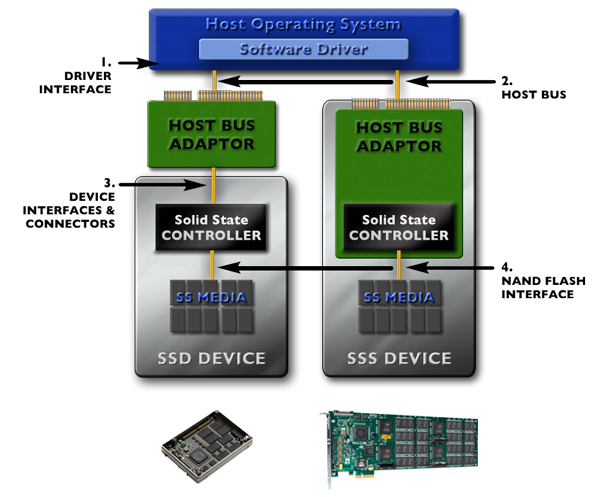NVM Express, seen by many in the SSD industry as the perfect replacement for SATA, will soon be implemented in silicon for the first time.
Cadence Design Systems, a provider of logic design solutions, has announced that they will be delivering NVM Express IP to anybody interested in devoloping a PCIe SSD.
Seeing as NVM Express is viewed by many as the natural successor to SATA, this really does end up being quite exciting news.
According to Cadence, certain parts of the industry are initiating a widespread adoption of PCIe. It’s true, that as time marches on, more and more manufacturers are making sure they have a PCIe SSD available on the marketplace. And why wouldn’t they? The fact is, as the industry is faced with the notion of perpetually furthering performance for the fervent masses, they are still stuck with the same slow as molasses (relatively speaking) SATA interface. While some may see this as a non-issue, there are many who NEED the absolute latest and highest performing hardware; In the solid state storage world, you need look no further PCIe based drives, which provide all the performance needed for even the pickiest of enthusiasts.
This all certainly sounds nice, though there is a potential fly in the ointment, that being price. It’s true, paying for a PCIe SSD can, in many cases, be worse than getting a tooth pulled. This could be an area where NVM Express really shines, acting as the proverbial novocaine for high costs, which have made some forms of solid state storage complete non-starters for many consumers. In particular, by providing a blueprint to serve as the basis for many products, NVM Express makes ground up drive R&D completely unnecessary, which should significantly reduce costs to both companies and consumers. Indeed, up until now, firms had to engineer their own PCIe software interface and supporting driver, neither of which are exactly trivial tasks. Aside from the extra effort needed during development, there was also the issue of cross platform compatibility, which no doubt made life difficult for many people who needed particularly speedy storage to power their open source machines.
Seeing as NVM Express, in large part, addresses the aforementioned issues, the only potential fly in the ointment would have to be industry acceptance, which might not be the non-issue it appears to be at first glance. As an example, I’m sure many companies will continue to develop their own data interfaces and drivers, if only to ensure that their products’ performance continues to be unmatched by competitors. Make no mistake, I’m not complaining, as innovation is always a critical component of any healthy market environment. I’m just saying, this will likely segment the market, creating a split between those companies that can afford to create their own complete home grown solution, and those that can’t. As such, the only question remaining will likely be how much of a premium will be placed on the higher performance solutions. Considering that the path to PCIe based SSDs looks pretty clear at this point, I’m sure we won’t have to wait an unreasonably long time to find out.
Overall, PCIe is in position to take over the solid state storage world. With more and more manufacturers embracing the interface every day, it would seem that the segment is in a state of flux at the moment. It appears to be the case, that in an effort to satisfy consumers’ cravings for ever more fluid data transfer, the industry is willing to fundamentally change many of its dynamics, perhaps even completely eliminating relatively antiquated interfaces in the process. It may only be a matter of time until PCIe SSDs simply become another standard part of the hardware equation.
Hopefully, before long, we’ll find out if this weighty theory holds any water. If we’re lucky, we’ll see some confirmation at this year’s Computex…..
Press Release On Next Page…….
 The SSD Review The Worlds Dedicated SSD Education and Review Resource |
The SSD Review The Worlds Dedicated SSD Education and Review Resource | 
